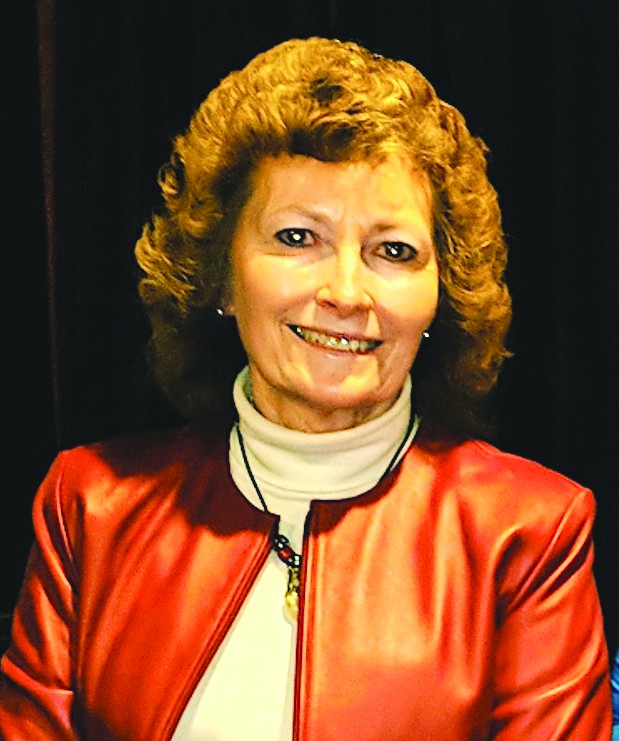Clerk provides overview of next four years

SAGUACHE— Newly elected County Clerk and Recorder Trish Gilbert intends to continue her campaign to streamline operations at the Saguache County Clerk’s office, and she has a plan already laid out to accomplish her goals.
Gilbert was appointed county clerk after former County Clerk Carla Gomez retired last January. Since then she has assembled a reliable team of employees she refers to as the Awesome Four, has provided training for herself and her employees, has overhauled the motor vehicle division of her department and has overseen the purchase and installation of new election equipment, begun during Gomez’s term.
Gilbert also has kept the public informed via her weekly column, Clips from the Clerk.
Since the election, Gilbert says she has not heard from the new Secretary of State Jena Griswold about any plans for working with clerks but says she imagines county clerks will learn about Griswold’s plans during their upcoming convention in January.
One of the concerns she hopes Griswold will address is the problems the county is having funding additional outside vote drop boxes. Former Secretary of State Wayne Williams said the state would fund 90 percent of the cost for the boxes, which must be monitored during the election. Gilbert hopes that offers still stands.
Other goals Gilbert has set for her office include:
• Applying for a second grant to complete indexing of digitized books
• Continuing to train, cross-train and keep certifications current
• Regaining responsibilities of minute taker for the Board of County Commissioners – Dominique White has already taken the oath for that duty.
• Working with the Secretary of State’s Office to place additional outside ballot drop boxes within the county
• Possible upgrade to the recording system for BOCC minutes to ensure the audio is clear on thumb drive/email copies
• Building on relationships/community contacts, especially for persons needing Spanish language assistance
• Maintaining an open line of communication with all citizens
• Continuing to make improvements to the webpage
• Continuing to inform the public via “Clips from the Clerk”
Election update
“Our election went amazingly smooth,” Gilbert said last week during a phone interview. “Our biggest issue was with the postal service.” Gilbert explained that before the print vendor will mail out ballots, they must be paid for their services. When the payment for the vendor was mailed, it went to Florida before going to Arizona to the vendor. The delay resulted in ballots being mailed out a few days late, she said.
Some people were afraid they would not get their ballots so asked for replacement ballots. When asked if this would create a problem with votes possibly being cast twice, Gilbert explained that both the voter ID and the signature are checked and the first ballot back is the one counted. This automatically voids the other ballot.
Altogether, Gilbert’s office discovered 40 signature discrepancies which had to “cured” or corrected by voters by Nov. 14. This is done by presenting identification and/or explaining any discrepancies. Gilbert estimated that 15-20 ballots will be sent off to the Alamosa District Attorney’s office.
The Risk Limiting Audit (RLA) was held Monday out of 190 votes and the canvass is set for Nov. 26 at 9 a.m. Gilbert said during her interview that it is unlikely what happened in Florida this election year could happen in Colorado because of the many security measures put in place by the state.
What is an RLA?
A risk-limiting audit is a procedure that provides strong statistical evidence that the election outcome is right and has a high probability of correcting a wrong outcome, if one exists.
Section l-7-515(2)(a), C.R.S., requires that commencing with the 2017 Coordinated Election each county shall make use of a risk-limiting audit.
Election Rule 25.2.2(a) requires the Secretary of State to establish and publish on the Audit Center the risk limits for both comparison audits (Dominion counties) and ballot polling audits (legacy system counties) at least 32 days before the election.
The “risk limit” is the largest chance that the audit yields strong evidence of a correct outcome when the reported outcome is wrong. RLAs conclude in one of two ways. The audit either (a) stops when it finds strong evidence that the reported outcome is correct, or (b) fails to find strong evidence that the outcome is correct and could potentially evolve into a full hand count of the ballots.
Smaller risk limits provide stronger evidence that the outcome is correct. If the risk limit is one percent the audit board will examine more ballots than if it is 10 percent. The risk limit is NOT the chance that the outcome (after auditing) is wrong. The risk limit is the largest such chance that the audit will not correct the outcome. If the risk limit is 10 percent and the outcome is wrong, there is a 10 percent chance that the audit will not correct the outcome and at least a 90 percent chance that the audit will correct the outcome.
“Our use of risk-limiting audits is one reason why Colorado has been recognized as a model for election security by The Washington Post and the head of Homeland Security — it is the type of post-election audit considered the gold standard by election security experts,” Gilbert said.
She pointed out that other states, including Rhode Island, Illinois and Washington, have passed legislation requiring risk-limiting audits in the future, but only Colorado has actually used them in an election. The state’s first risk-limiting audit was in 2017. The event attracted computer and political scientists, statisticians and mathematicians, election integrity advocates, and federal and state election officials from across the country.
Gilbert says she and her office personnel will be responsible, accountable, respectful, effective, efficient public stewards, promoting honesty, integrity, and openness in all they do. “We are dedicated to putting citizens and services first!” she concluded.



